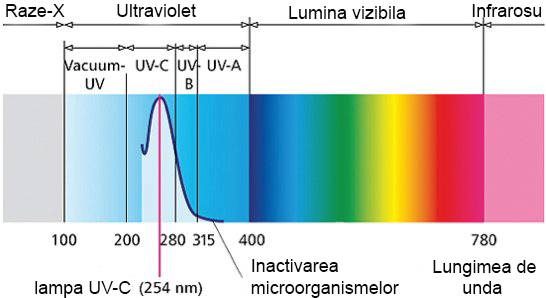
What does UV-C ultraviolet light mean?
Ultraviolet radiation (UV light), the invisible component of solar radiation, is located, as a wavelength, between infrared and X-rays.
There are 3 types of UV light, which differ in wavelength and have different effects on living organisms:
UV type C - from 100 nm to 280 nm (destructive effect on cells, causing serious cell damage and destruction).
UV type B - from 280 nm to 315 nm (tanning effect, by stimulating the cells that determine the normal coloration of the skin - melanocytes).
UV type A - from 315 nm to 400 nm (erythematous effect on dermatological, inflammatory diseases).
Looking back, we find that UV-C sterilization began to become popular and accepted in the mid-20th century. In fact, in 1903 the Nobel Prize in Medicine was awarded to Niels Finsen for using UV-C rays against tuberculosis. Since then, UV-C rays have been used successfully in the medical sterilization process, successfully removing viruses and bacteria from the air and from surfaces.
UV-C light penetrates the DNA of bacteria, permanently destroying the pathogen. In addition, UV-C light does not become hot to affect other surrounding objects.
Biocidal lamps are environmentally friendly and completely safe electronic devices that ensure disinfection and sterilization by UV-C ultraviolet light.
UV-C light destroys 99.99% of microorganisms harmful to human health: viruses, bacteria, mold spores, fungi, protozoa.
UV-C biocidal lamps act on the air and surfaces, helping to create a healthy microclimate and protect people without the use of chemicals.